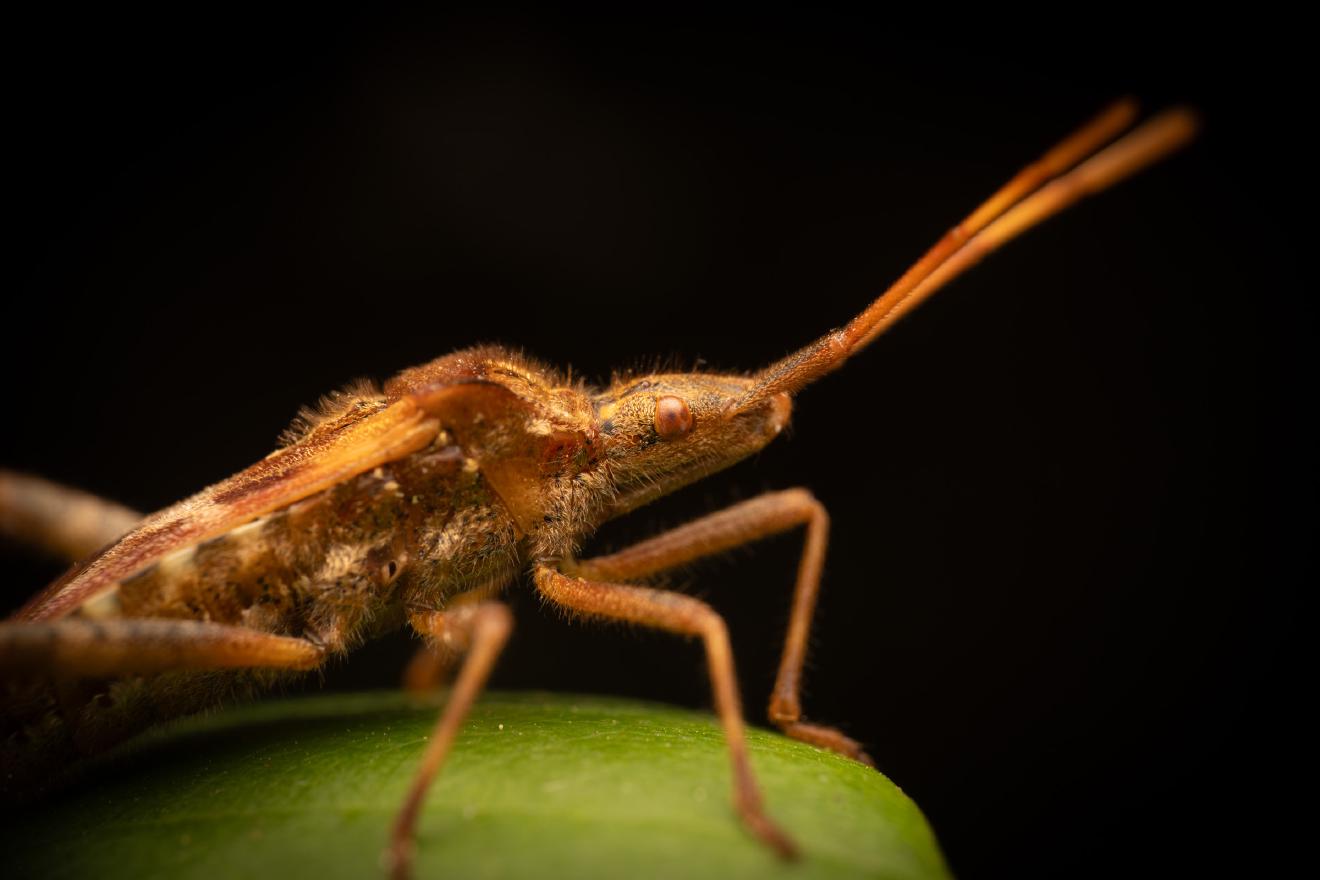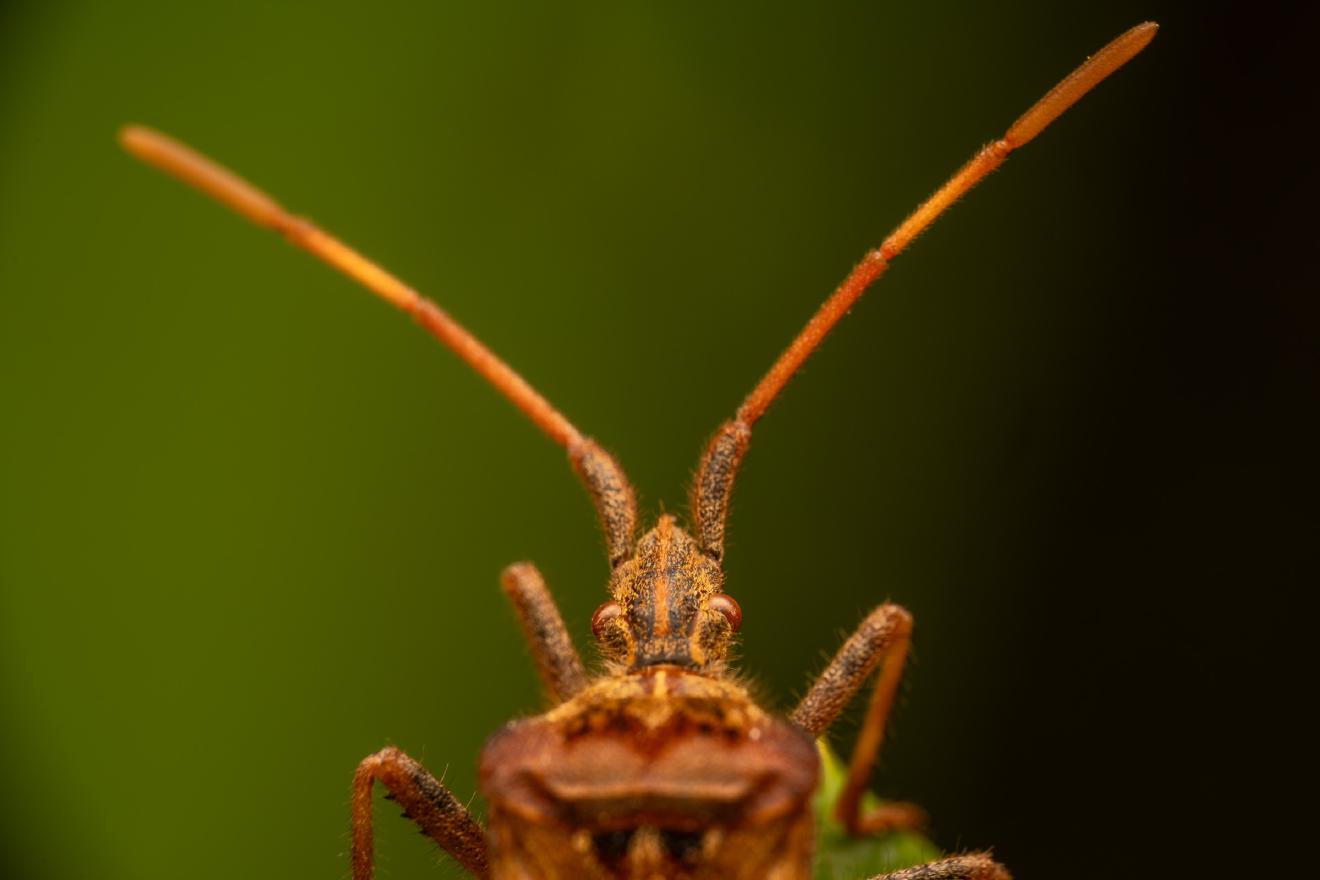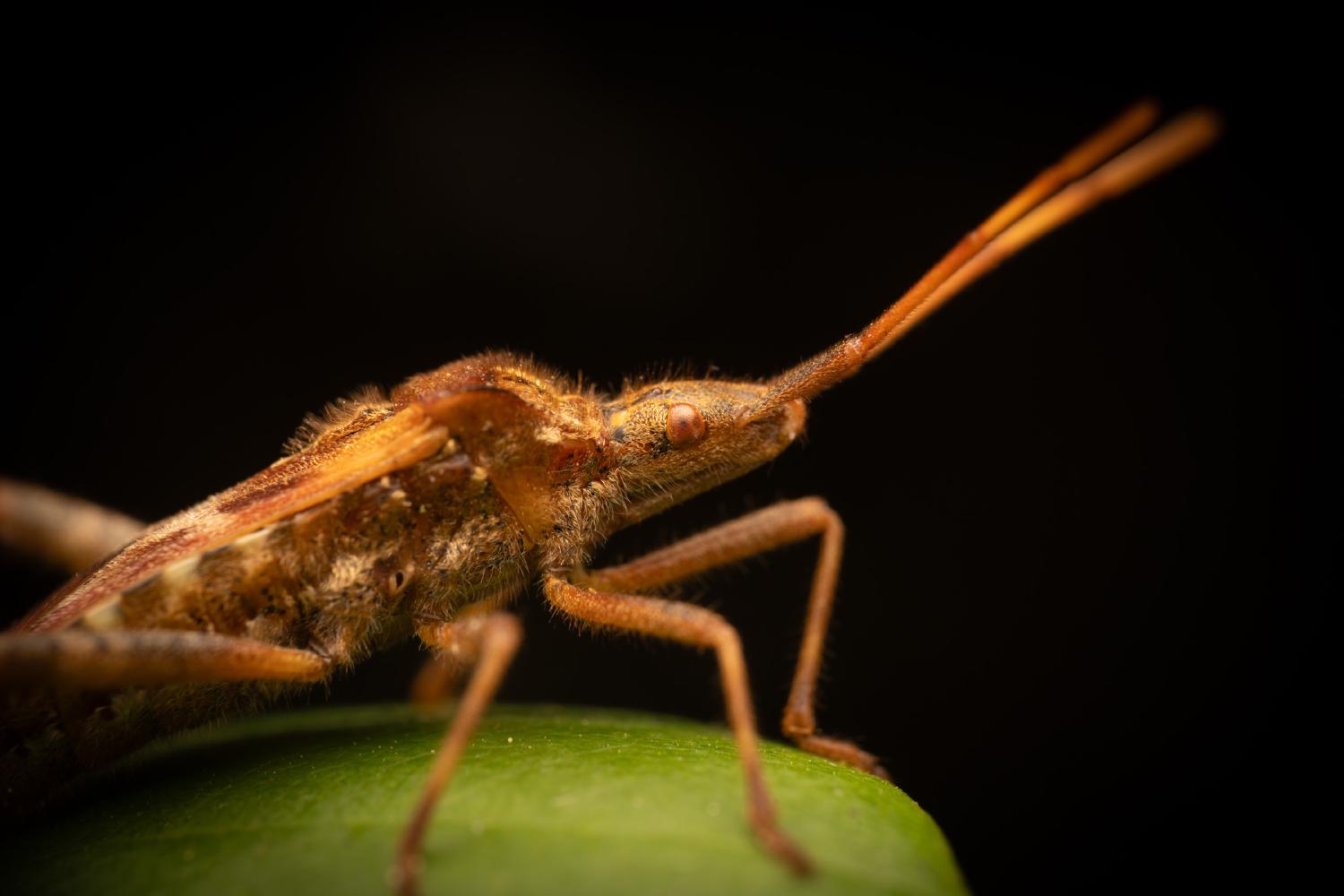Western Conifer Seed Bug
Lat. “Leptoglossus occidentalis“
species
of family
“Leaf-footed Bugs“
1 species
The western conifer seed bug is a small insect that can fly and emits an unpleasant smell as a defense mechanism. They feed on conifer sap, causing damage to developing seeds, and can also feed on other plants if needed. The bug lays eggs on host plants, and the nymphs go through several stages before becoming adults. In the United States, they have one generation per year, but in southern Europe, they can have two generations. In northern areas, they seek shelter in crevices during winter and may enter houses in large numbers, sometimes causing damage by piercing tubing.
Description
The average length is 16–20 millimetres (0.63–0.79 in) with males being smaller than females. They are able to fly, making a buzzing noise when airborne. Western conifer seed bugs are somewhat similar in appearance to the wheel bug Arilus cristatus and other Reduviidae (assassin bugs). These, being Cimicomorpha, are not very closely related to leaf-footed bugs as Heteroptera go; though both have a proboscis, but only the assassin bugs bite even if unprovoked, and L. occidentalis like its closest relatives can be most easily recognized by the expanded hindleg tibiae and by the alternating light and dark bands which run along the outer wing edges on the flaring sides of the abdomen. Their primary defense is to emit an unpleasant-smelling alarm pheromone; however, if handled roughly they will stab with their proboscis, though they are hardly able to cause injury to humans as it is adapted only to suck plant sap and not, as in the assassin bugs, to inject venom.
Ecology
In its native range, the western conifer seed bug feeds on the sap of developing conifer cones throughout its life, and its sap-sucking causes the developing seeds to wither and misdevelop. It is therefore considered a minor tree pest in North America, but becoming sometimes more harmful e.g. in conifer plantations. However, it is not monophagous and even adaptable enough to feed on angiosperms if it has to, though it seems to prefer resiniferous plants that are rich in terpenes. As these are produced by plants to deter herbivores, it might be that in evolving its ability to overcome these defenses, L. occidentalis actually became somewhat dependent on such compounds. Its host plants in the native range include conifers such as Douglas-fir (Pseudotsuga menziesii), ponderosa pine (Pinus ponderosa), lodgepole pine (Pinus contorta), and white spruce (Picea glauca). Outside the native range, it is found on species such as eastern white pine (P. strobus) and red pine (P. resinosa) in eastern North America and Europe, and mountain pine (P. mugo), black pine (P. nigra), Scots pine (P. sylvestris) and pistachio (Pistacia vera) in Europe. The eggs are laid in small groups on the needles or leaf stems of its host plants, and hatch in spring. The nymphs go through 5 instar stages before moulting into adults. In the United States, the species is univoltine, but in southern Europe, it completes two generations a year, and in tropical Mexico even three. In the northern parts of its range, these bugs start to move about widely by September or so to seek crevices for overwintering; they may become a nuisance in areas with extensive conifer woods, as they will sometimes enter houses in considerable numbers. They have the potential to become structural pests, as it has been found that they will sometimes pierce PEX tubing with their mouthparts, resulting in leakage.
References
This article draws heavily on the corresponding article in the Italian-language Wikipedia.
External links
Stages of metamorphosis Status of L. occidentalis in Britain Pennsylvania State University - Western Conifer Seed Bug



Ancestry Graph
Further Information
Copyright

This article uses material from the Wikipedia article Leptoglossus occidentalis the free encyclopedia Wikipedia which is released under Creative Commons Attribution-ShareAlike 4.0 International License). On Wikipedia a list of authors is available.
